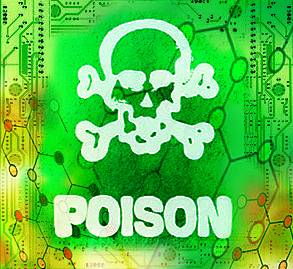In the closing years of the nineteenth century German scientists sought for the ‘silver bullet’ – an elixir to relieve all aches and pains. Their discovery of an opium derivative appeared to be just that – a ‘heroic’ medicine. So they christen it ‘heroin.’ Half-a-century later Germany researchers were once again attempting to dscover a substitute for the nicotine insecticides then in short supply. In 1938 four scientists at IG Farben in Wuppertal-Elberfeld created just such a stronger pesticide. It was named in honour of its discoverers Schrader, Ambros, Rüdiger and Van der Linde: sarin. Sixty-five years later, sarin was used as a chemical weapon by the Bashar al-Assad’s Syrian regime to kill more than 1,400 people on 21 August, incurring the world’s wrath. Sarin is an organophosphate, a group of highly successful and widely used chemicals used for control of a broad spectrum of crop insect and arachnid pests. They include such popular preparations as malathion, diazinon and chlorpyrifos (Dursban®), dimethoate (Cygon®) and dichlorvos (Vapona®) all widely distributed for home use at least until recently. Most are still available for agricultural and forestry use, accompanied by an alarming number of other organophosphates, many of whose tongue-twisting names conceal their lethal nature.
Exactly how poisonous are these pesticides? Researchers measure the amount required to kill half a number of test rats as expressed in micrograms of pesticide per kilogram of the rat’s weight either orally or dermal. Such is known as the ‘lethal dose 50%’ or LD50. The lower such LD50 then, the more hazardous is the chemical.
In years past, a spring rite was to paint the trunks of paper birch with dimethoate (Cygon®), which, when absorbed into the tree, eliminated birch leafminer. However, the dermal LD50 of Dimethoate (Cygon®) measures just 150. By comparison, another still popular organophosphate, Malathion, comes in with a dermal LD50 of 4000.
No LD50 appears to have been published for sarin but the clear, colourless, and tasteless organophosphorus compound that has no odour and is heavier than air has been said by the World Health Organization WHO) to be 26 times more deadly than cyanide gas.
Sarin is made by mixing commercially available sodium fluoride with dimethyl-methylphosphate, phosphorus, alcohol, carbon, hydrogen and oxygen in the right amounts and in the right sequence, according to the Federation of American Scientists, which warns that “it is somewhat complicated and dangerous to produce.” It adds, “It is debatable how easy it is for the layperson to synthesize sarin.”
Notwithstanding this, in 1994 the Japanese sect Aum Shinnikyo released impure sarin from the back of a truck driven around a residential complex in Matsumoto, Nagano Prefecture, killing eight and injuring over 200. Unsatisfied with this, in March of the following year, they tried again releasing sarin into the Tokyo Metro, causing 13 deaths and 6000 injuries.
In the hands of tyrants who have a disdain for their subjects’ lives, the result can be even more spectacular. When Saddam Hussein ordered sarin to be released in March 1988 at Halabja in northern Iraq, it caused an estimated 5,000 deaths.
Although Saddam was later executed, the world was hardly stirred to the same extent as it was with the 21 August of this year’s Damascus killing of 1,429, including 426 children. Syria now appears to be joining almost every other nation in joining international agreement prohibiting chemical weapons such as sarin. Two of the holdouts are Israel and Egypt . . .
It has been said that a gun can point two ways. Similarly was the discovery by IG Farben researchers in 1938. It has been argued that without the inclusion of such pesticides the ‘Green Revolution’ that allowed for vastly increased food production to secure the growing world population in the latter half of the past century. Today we face with growing understanding the risks posed by such apparent advances to the environment and human health – and to entire populations when misappropriated by tyrannical governments.
Source: Canada Free Press, October 26, 2013
http://canadafreepress.com/index.php/article/58830

- Login om te reageren
